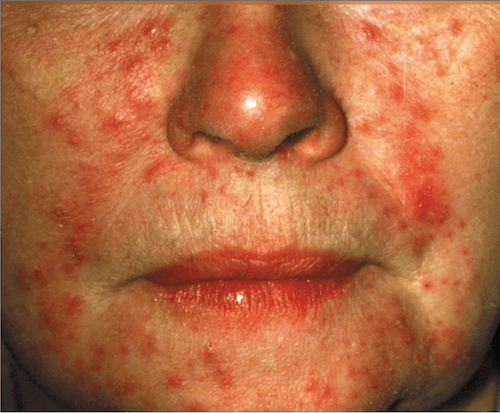 Demodex folliculorum, the microscopic mite thought to be a potential cause of subtype 2 (papulopustular) rosacea, has come under the microscope (literally) as researchers continue to explore its potential connection with the disease. However, while Demodex may have only recently gained more attention in the rosacea research community, the mite has a much longer history in the realm of medical science.
Demodex folliculorum, the microscopic mite thought to be a potential cause of subtype 2 (papulopustular) rosacea, has come under the microscope (literally) as researchers continue to explore its potential connection with the disease. However, while Demodex may have only recently gained more attention in the rosacea research community, the mite has a much longer history in the realm of medical science.
In an article published in the journal Advances in Clinical and Experimental Medicine, “Demodex -- An Old Pathogen or New One?,” Dr. Rusiecka-Ziolkowska and colleagues in the Department of Microbiology at Wroclaw Medical University in Poland outline the history of research into the mites. Reports of Demodex mites were recorded as early as 1841, more than 150 years ago, by German anatomy professor Jakub Henle. A year later, a German dermatologist found Demodex type mites in hair follicles, almost 100 years before human Demodex was first observed in the development of rosacea.
The word mite may evoke a negative reaction, but Demodex mites are normal inhabitants of human skin and exist in nearly all populations worldwide. Two kinds of human Demodex mites are known to exist: Demodex folliculorum, which live in the hair follicles on the face and Demodex brevis, which live in the sebaceous glands at the rim of the eyelids, known as the meibomian glands. They commonly appear on the forehead, chin and around the eyes and mouth, and have a short lifespan of 3-4 weeks. Other species in the Demodex family live on various animals where they may cause mange and other diseases. Those mites are different species from the ones found on humans, and are not communicable between species.
According to Dr. B Raszeja-Kotelba, Demodex occurs more often in women than in men and frequency increases with age, which is consistent with the prevalence pattern of rosacea.
While Demodex folliculorum exist in all human skin, studies have found an elevated incidence of the mites in rosacea patients, leading to a belief that it may be a cause or result of the disease. Demodex brevis may also play a role in ocular rosacea, the subtype of rosacea that involves irritation of the eyes. While researchers have long debated whether the increased prevalence of mites in the facial skin is a result of rosacea, more recent research has pointed to the possibility that the mite may play a role in its development.